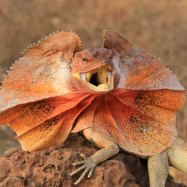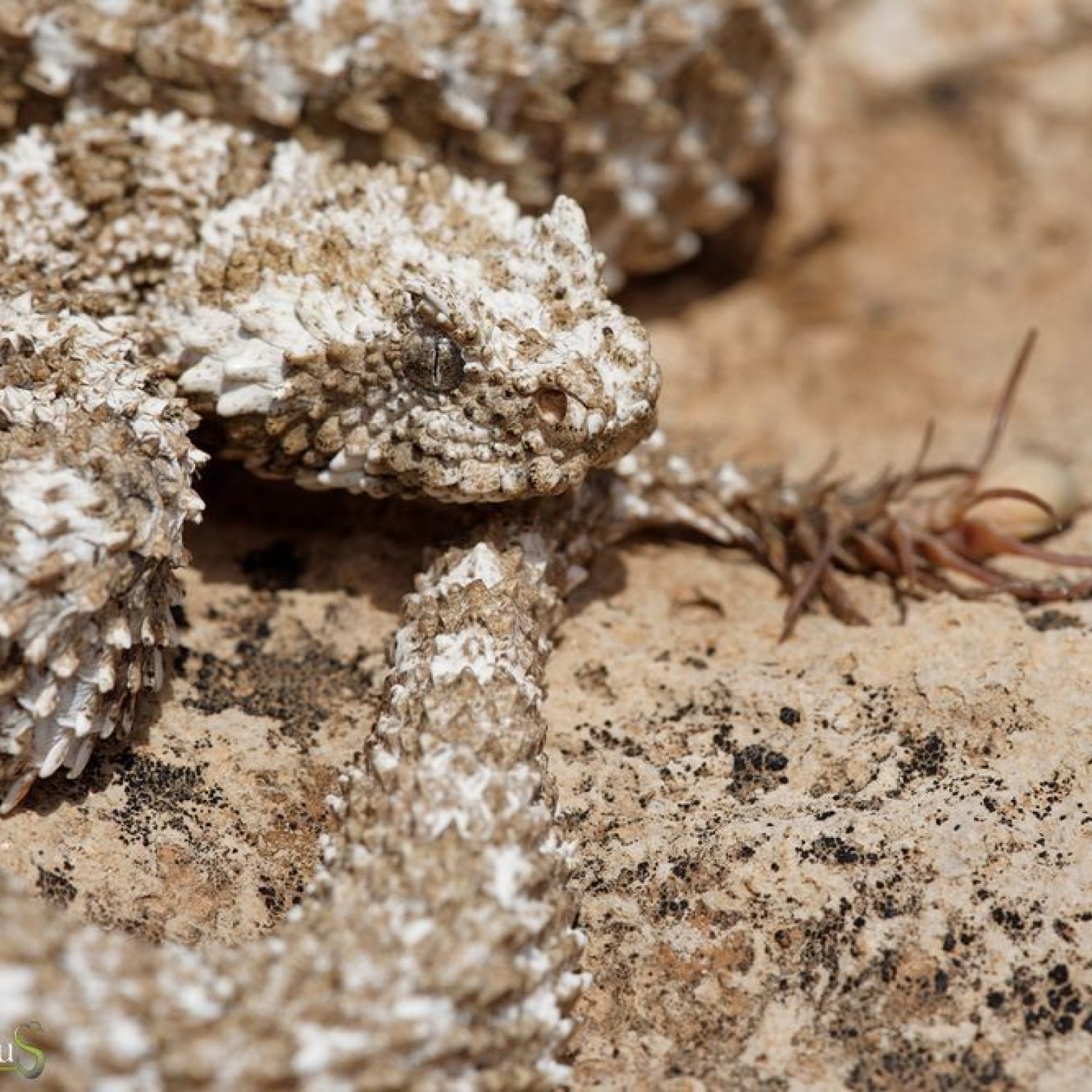
Spider Tailed Horned Viper
20-30 centimeters
The Spider Tailed Horned Viper, found in the Zagros Mountains, is a slender and cylindrical viper with a length of 20-30 centimeters. Belonging to the Viperidae family, it is easily identifiable by its unique spider-like tail and horned head. Despite its fearsome appearance, it plays a crucial role in the ecosystem by controlling small rodent populations. #spidertailedhornedviper #Zagrosmountains #viperidae #ecosystem
Animal Details Summary:
Common Name: Spider Tailed Horned Viper
Kingdom: Animalia
Habitat: Rocky desert areas
The Fascinating Spider Tailed Horned Viper: A Master of Deception in the Rocky Desert
Hidden within the rocky desert areas of the Zagros Mountains in Iran lies a creature unlike any other - the Spider Tailed Horned Viper. With its unique appearance and hunting tactics, this small viper has captured the attention of researchers and nature enthusiasts alike.Scientifically known as Pseudocerastes urarachnoides, the Spider Tailed Horned Viper is a member of the Animalia kingdom, Chordata phylum, Reptilia class, and Viperidae family. This viper has adapted and thrived in the harsh rocky deserts of Iran, making it a true survivor in its environment Spider Tailed Horned Viper.
The most striking feature of this viper is its spider-like tail, which is where it gets its name from. This appendage mimics the movement of a spider's legs, and coupled with its horn-like scales on the top of its head, creates an illusion that lures unsuspecting prey towards it. This unique adaptation is a testament to the cleverness and cunning nature of this viper.
Its body measures 20-30 centimeters in length and is slender and cylindrical in shape, allowing it to move effortlessly through the rocky terrain. Its coloration is also remarkable, with light brown or reddish-brown as its base color, adorned with darker and lighter bands and spots. This camouflage helps it blend in with its surroundings and stay hidden from predators and prey alike.
Being a member of the Viperidae family, the Spider Tailed Horned Viper is a true carnivore, preying on insects, lizards, and small rodents. Its hunting method is unique and has been observed to be highly successful. It typically stays buried in the sand with only its tail protruding, waiting patiently for an unsuspecting prey to approach Smooth Green Snake. Once the prey is within striking distance, the viper unleashes a lightning-fast strike, bringing down its prey with deadly precision. This deceptive tactic has earned it the nickname "spider-tailed assassin."
The geographical distribution of this fascinating creature is limited to Iran, specifically the Zagros Mountains. It is believed that the harsh rocky desert environment of this region has played a significant role in shaping the viper's unique physical characteristics and adaptive behaviors. Despite its restricted distribution, the Spider Tailed Horned Viper faces threats in the form of habitat loss and illegal collection for the exotic pet trade.
In addition to its impressive hunting tactics, the Spider Tailed Horned Viper is also an expert at camouflage. Its body coloration allows it to blend seamlessly with the rocky desert landscape, making it challenging to spot. This ability to hide in plain sight has allowed it to survive and thrive in its harsh environment for centuries.
For researchers, the Spider Tailed Horned Viper is a subject of fascination and study. One of the mysteries that scientists are trying to unravel is the purpose of its unique tail. Some believe that it is simply a hunting tool, while others theorize that it is also used as a defense mechanism. Research efforts are ongoing, and it is hoped that we will uncover more about this elusive viper in the future.
The Spider Tailed Horned Viper may have a fierce and deadly reputation, but in reality, it is a shy and elusive creature, preferring to stay hidden and avoid confrontation. However, when threatened, it can deliver a potent and venomous bite, making it a formidable force in its environment.
Despite its venomous nature, the viper plays a crucial role in maintaining the balance of its ecosystem. As predators, they help to control the population of insects and small rodents, preventing them from becoming pests and causing damage to the environment.
The Spider Tailed Horned Viper's unique physical characteristics and adaptive behaviors make it a true marvel in the world of reptiles. Its deceptive tactics and masterful camouflage are a testament to the incredible abilities of animals to survive and thrive in their environment.
In conclusion, the Spider Tailed Horned Viper is a highly impressive and fascinating creature that is worthy of our attention and admiration. Its unique appearance, hunting tactics, and survival skills make it a natural wonder that we should strive to protect. As we continue to learn more about this incredible viper, we are reminded of the vast diversity and ingenuity of nature.

Spider Tailed Horned Viper
Animal Details Spider Tailed Horned Viper - Scientific Name: Pseudocerastes urarachnoides
- Category: Animals S
- Scientific Name: Pseudocerastes urarachnoides
- Common Name: Spider Tailed Horned Viper
- Kingdom: Animalia
- Phylum: Chordata
- Class: Reptilia
- Order: Squamata
- Family: Viperidae
- Habitat: Rocky desert areas
- Feeding Method: Carnivore
- Geographical Distribution: Iran
- Country of Origin: Iran
- Location: Zagros Mountains
- Animal Coloration: Light brown or reddish-brown with darker and lighter bands and spots
- Body Shape: Slender and cylindrical
- Length: 20-30 centimeters
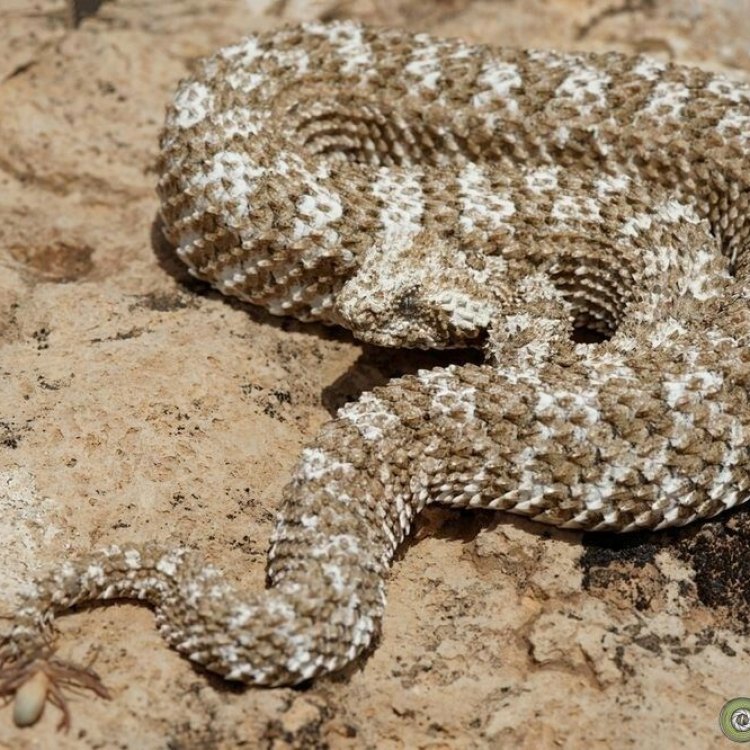
Spider Tailed Horned Viper
- Adult Size: Up to 30 centimeters
- Average Lifespan: Unknown
- Reproduction: Viviparous
- Reproductive Behavior: Unknown
- Sound or Call: Unknown
- Migration Pattern: Unknown
- Social Groups: Solitary
- Behavior: Ambush predator
- Threats: Habitat destruction and fragmentation
- Conservation Status: Data deficient
- Impact on Ecosystem: Maintains ecological balance by controlling rodent populations
- Human Use: None
- Distinctive Features: Spider-like tail tip used to attract prey
- Interesting Facts: The spider-like tail tip is used to attract lizards and birds
- Predator: Unknown
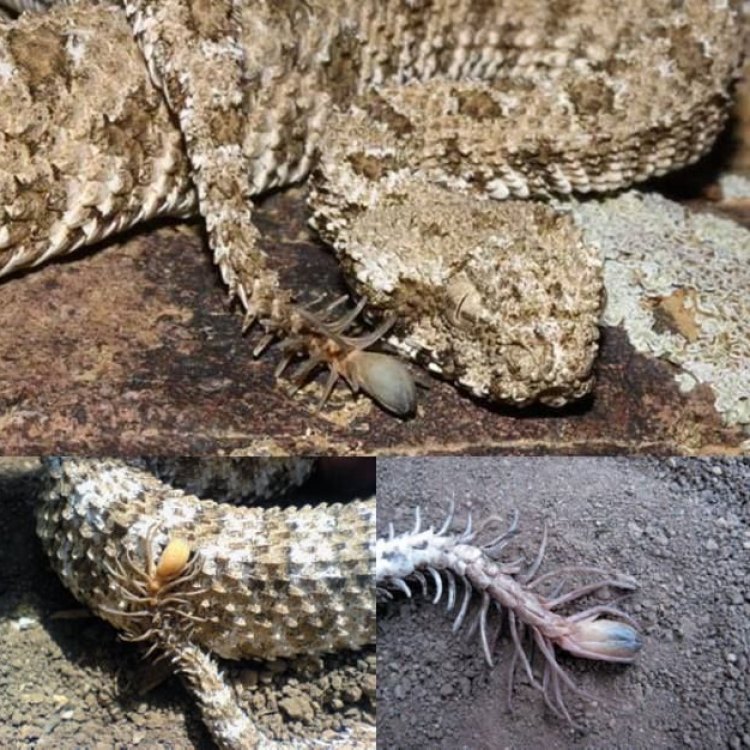
Pseudocerastes urarachnoides
The Mysterious Spider Tailed Horned Viper: A Unique and Elusive Snake
Nature never fails to surprise us with its fascinating and often bizarre creations. The Spider Tailed Horned Viper is one such wonder, with its distinctive spider-like tail tip, this snake has captured the attention of many researchers and nature enthusiasts. But what makes this snake so special? Let's delve deeper into the world of this mysterious species.The Spider Tailed Horned Viper, scientifically known as Pseudocerastes urarachnoides, is a venomous pit viper found in the central and northern regions of Iran PeaceOfAnimals.Com. Its unique name comes from the fact that its tail resembles that of a spider, with a thin and elongated tip that is often curled up. This tail is unlike any other known snake and is used as a lure to attract its prey.
Size and Lifespan:
The average size of an adult Spider Tailed Horned Viper is around 30 centimeters, making it one of the smallest viper species. However, some specimens have been known to grow up to 40 centimeters in length. As for their lifespan, it is still unknown, but it is estimated to be around 10-12 years in the wild.
Reproduction and Behavior:
Not much is known about the reproductive behavior of this species. However, based on the few observations made, it is believed that they are viviparous, meaning the females give birth to live young. The number of offspring in each litter can range from 2-20, depending on the size and age of the female.
The Spider Tailed Horned Viper is a solitary snake, preferring to live alone Spider Monkey. It is predominantly nocturnal and spends most of its time hidden under rocks and crevices during the day, only coming out at night to hunt for prey. Its behavior is that of an ambush predator, relying on its camouflaged body and spider tail to attract its unsuspecting victims.
Threats and Conservation Status:
The biggest threat to the Spider Tailed Horned Viper is habitat destruction and fragmentation. Its natural habitat, the rocky mountains and deserts of Iran, are facing severe degradation due to human activities such as mining, grazing, and construction. This has resulted in a decline in the population of this elusive snake, and it has been listed as data deficient on the IUCN Red List, which means there is insufficient information to determine its conservation status.
Role in the Ecosystem:
Despite its small size, the Spider Tailed Horned Viper plays a crucial role in maintaining the ecological balance in its habitat. As an ambush predator, it primarily feeds on lizards and birds, keeping their populations in check. This, in turn, prevents an imbalance in the food chain and ensures the survival of other species that depend on these prey animals.
Distinctive Features:
The most distinctive feature of the Spider Tailed Horned Viper is, of course, its spider-like tail tip. This tail is not just for show; it serves a practical purpose. As mentioned earlier, this tail is used to attract prey, mimicking the movements of a spider. The thin, black, and white stripes on the tail resemble spider legs, and its movements are slow and deliberate, enticing its prey to come closer for a closer look.
Interesting Facts:
Apart from its spider-like tail, there are many other interesting facts about the Spider Tailed Horned Viper that make it stand out from other snakes. One of the most fascinating facts is that this snake is not a very active hunter. Instead, it relies on its unique tail to lure its prey. This is an adaptation that has evolved over time, and it is a perfect example of how nature finds unique solutions to survival.
Impact on Humans:
The Spider Tailed Horned Viper has no direct impact on humans, mainly because of its elusive nature. However, the snake's venom is highly potent and can cause severe tissue damage and, in some cases, death. Therefore, it is advisable to exercise caution when in close proximity to its habitat, and any encounters should be avoided.
Predators:
There is limited research on the predators of the Spider Tailed Horned Viper. However, it is believed that larger predators, such as birds of prey, may occasionally feed on this snake. Its cryptic and secretive nature makes it challenging to study its natural predators.
The Enigma of the Spider Tailed Horned Viper:
Despite being discovered in the 1960s, much about the Spider Tailed Horned Viper is still a mystery. With limited research and documentation, there is still much to uncover about this elusive species. But one thing that is certain is that the presence of this snake in the wild is a testament to the diversity and adaptability of nature.
In conclusion, the Spider Tailed Horned Viper is a unique and enigmatic snake, with its spider-like tail and elusive nature. Its role in its ecosystem is critical, and it serves as a reminder of the delicate balance of nature. As we continue to explore and discover the wonders of the natural world, it is essential to remember the importance of preserving and protecting these species for future generations to witness and marvel at. The mysterious Spider Tailed Horned Viper is truly a fascinating and one-of-a-kind creature that deserves our admiration and respect.
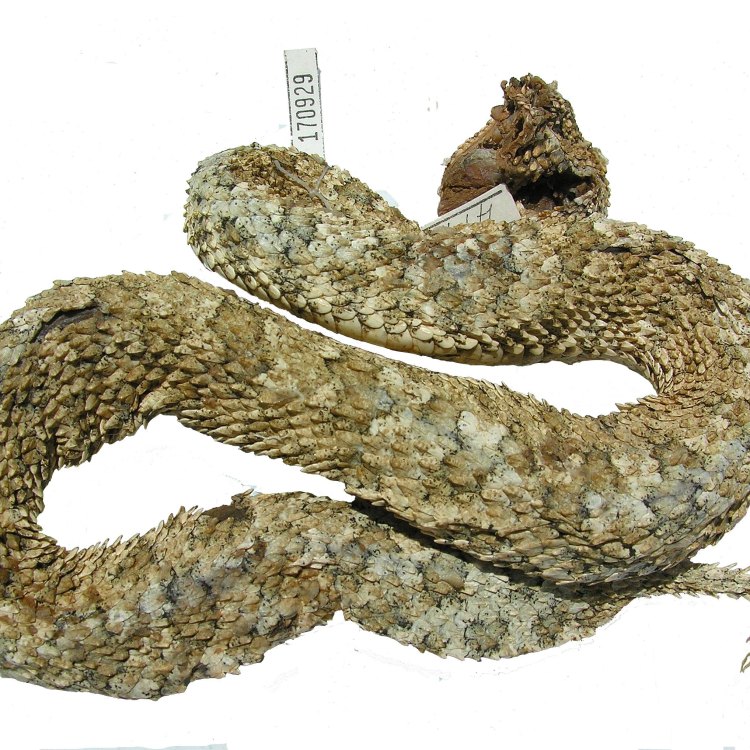
The Fascinating Spider Tailed Horned Viper: A Master of Deception in the Rocky Desert
Disclaimer: The content provided is for informational purposes only. We cannot guarantee the accuracy of the information on this page 100%. All information provided here may change without prior notice.






